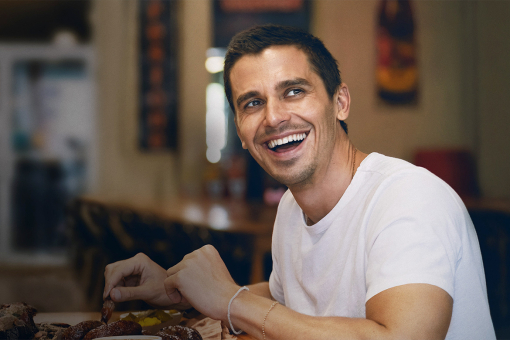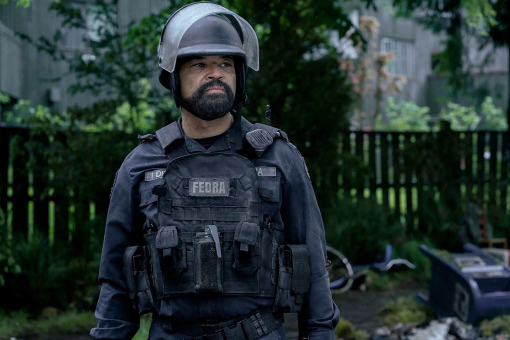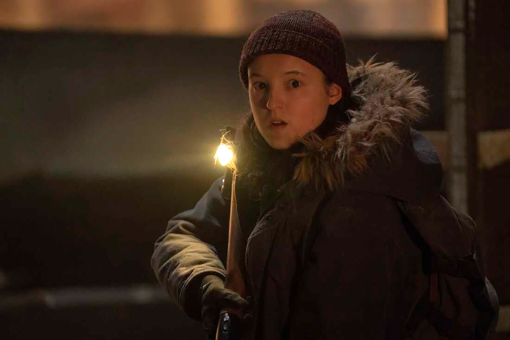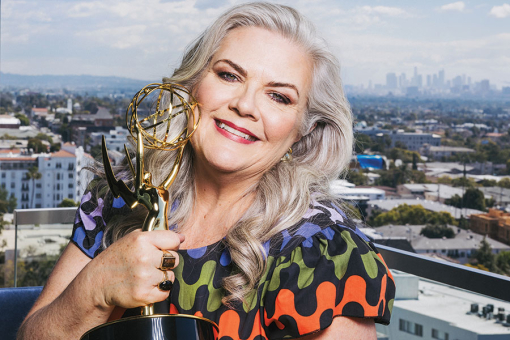When financial advisor Suze Orman appeared on QVC in 1994 to promote her first book, You've Earned It, Don't Lose It, a star was born. The Chicago-born Orman had become interested in money matters back in 1980 after handing over a sizable sum to an investement broker — who promptly lost it all. That prompted Orman to learn about money herself and to develop a strategy for financial self-empowerment.
Following her QVC splash, she took her message to PBS specials and then to The Oprah Winfrey Show, where she would appear dozens of times. Her own Suze Orman Show aired on CNBC from 2002 to 2015, solidifying her status as a cultural icon. She has been written into episodes of The Simpsons and supplied her own voice (in one show, she made it clear to Homer that he couldn't buy a Mercedes until he'd paid off his credit cards). And she's been parodied on Saturday Night Live, with Kristen Wiig doing the impersonations.
Orman, who has been married to Kathy Travis since 2010, brings a direct, positive approach to financial planning. "I'm not a scripted talent. I don't get up and read a teleprompter," she says. Her knack for delivering straight-forward advice has garnered her two Daytime Emmy Awards, in 2004 and 2006, for outstanding service show host. In 2016, Orman partnered with the U.S. Army Reserve to deliver personal finance advice to members of the military. She currently hosts the Women and Money podcast and a show on HSN/QVC.
Orman was interviewed in October 2012 by Nancy Harrington for The Interviews: An Oral History of Television, a program of the Television Academy Foundation. The following is an edited excerpt of their conversation. The entire interview can be screened at TelevisionAcademy.com/Interviews.
Q: Where did you go to college?
A: The only college I could afford was the University of Illinois at Urbana-Champaign. I don't think I ever got a grade above a C, but I didn't care. I had no goals whatsoever.
Q: But you did have a roommate who became quite well known....
A: My roommates were Carole Morgan and Judy Jacklin, and Judy had a boyfriend from high school by the name of John Belushi. With Judy came John. So the four of us lived in this one-bedroom apartment in sophomore year. Then in junior year, we moved into a two-bedroom apartment and got another friend to move in with us. I shared a room with John and Judy.
Q: Was John performing at the time?
A: Yes, but not at places that you would imagine. He would perform at the Red Herring Coffee House. And John was always John. Even when John got extremely famous, he never changed.
Q: What did you do after college?
A: I didn't actually graduate after four years, because I never took a foreign language. I had all the credits except that. In 1973, I decided I wanted to see the world. My friends and I got a 1970 Ford Econoline van and headed to California. When we got to Berkeley, we lived in the van for three or four months, getting any jobs we could. One day we went into a restaurant called the Buttercup Bakery and they said, "Hey, want to work?" I worked as a waitress there for seven years, from 1973 to 1980, making $400 a month.
Q: Then you decided to open your own restaurant?
A: I did. When I first started working at the Buttercup Bakery, it was this little corner place. Then they expanded into the store next door and before you knew it, they owned half the block — a lot of the expansion was based on ideas that I came up with. But my salary was still the same. So I thought, "I could open my own restaurant." I called my mom and dad and asked them for $20,000 to open my own restaurant, and they didn't have that kind of money.
When I went to work the next morning, a man I had been waiting on for seven years, Fred Hasbrook, came in. I didn't look happy and he asked, "What's wrong, Sunshine?" I told him the story. Then he sat down with all the other gentlemen I had been waiting on all those years. Before he left, he came up to the counter with all this stuff in his hands, which he put on the counter and said, "Look." There were checks and commitments — because not everybody had a checkbook with them — totaling $50,000, with a little note from him on a napkin that said: "This is for people like you to have your dreams come true. To be paid back in ten years at no interest, if you can." And that's how everything started.
Q: What did you do with the money?
A: I didn't know what to do with the money. Fred told me to open a money market account. I didn't know what that was, so he explained it to me. When I took it to a brokerage firm to open an account, I was assigned a broker, and he had me sign blank papers. I didn't think twice about it. He started to trade the options market with my money. Within three months, all $50,000 was lost. I didn't know what to do.
Then I thought, "Well, I could be a broker." It was 1980 and affirmative action was in full bloom. I interviewed at the Oakland office of Merrill Lynch, which had no women stockbrokers at that time. They ended up hiring me to fill their women's quota — that's my opinion.
Q: Was your hiring really just about the quota, or do you think they saw something in you?
A: They absolutely just saw the quota, without a shadow of a doubt.
Q: But you were a quick study....
A: While I was studying to be a stockbroker, I realized that what my broker had done with my funds was illegal. You can't invest somebody's money in a manner that is incompatible with their level of risk. So I ended up suing.
They gave me all the money back [that I had lost] plus 18 percent interest, which is what interest rates were back then. I was able to pay everybody back, plus interest.
Q: What was the most important thing you learned about money as a broker?
A: That I didn't know anything about it. All these people would come in and give a sales pitch to the brokers — why we should sell our clients this, why we should do that. And they just didn't make sense. Everything ended with, "And if you do this, this is how much money you are going to make." But never once did they say, "If you do this, your clients are going to make this much money."
I learned from my clients how to choose investments. I would ask, "Why did you do that?" It was my clients who taught me how to be smart with money.
My life as a professional finance person has always been rooted in "for the people, by the people." It is people's birthright to have financial freedom, and it is my job to make sure that's exactly what happens.
Q: So when you started your own business, was that your goal? To be for the people?
A: Yes. My goal in starting my firm was very simple: to make people as independent from people like me as possible. If I was really doing my job well, I would never see somebody more than twice. If I could educate them on how to be strong on their own, then I was really helping them, as opposed to making them dependent upon me.
Q: How did you end up writing your first book?
A: I met Linda Mead, a book agent, at a party. I said, kind of joking, "I always wanted to write a book." And she said, "Oh? What would you call it?" I said, "'Keeping Your Gold in the Golden Years.'" She said, "We can do that."
That book turned out to be called You've Earned It, Don't Lose It. But when we went on the book tour, nobody was showing up at my signings — not one person. So I gave my talk to the booksellers at Barnes & Noble, Borders and the independent bookstores. The next day, I would send them flowers to say, "I'm sorry you wasted your time."
Well, after that, whenever anybody came in and asked for a book on finance, the bookseller recommended You've Earned It, Don't Lose It. And within just a few weeks, all 15,000 books of the first print run were sold out. Then [my publisher] Esther Margolis ordered another print run. And she convinced QVC2 [a spinoff network of QVC, since folded] to go with a book. QVC didn't like to sell books, because you can't demonstrate a book. They had major authors on QVC, and they flopped terribly.
But somehow Esther convinced Q2 to have me on. And 303 books sold in twenty minutes. That doesn't sound like a lot, but for Q2 that was beyond the beyond. So they had me on again. And again. And before you knew it, we had sold over 100,000 books. That's how I got my entrée. It was QVC that put me on the map as an author.
Q: Was the Suze on the first QVC show the same Suze we see today?
A: Yes. I was as big a character then as I am now. Talking right to the camera, talking to people, telling stories about people's lives. Nothing has changed. And who you see on camera is exactly who I am off camera.
Q: In 1997, you wrote your second book and that became a PBS special.
A: The Nine Steps to Financial Freedom had sold some 300,000 copies the first year, on its own. But I was thinking, "If only I could have a PBS special...." Deepak Chopra had a PBS special, and he sold 1.7 million copies of his book!
So I went to Random House and asked if I could have a PBS special. Then I went to QVC and said, "If you fund my PBS special, and we sell the product that I'm creating with you for QVC on PBS, the first proceeds can go to pay you back." So we created a special called The Nine Steps to Financial Freedom. Fifty people were in the audience for the taping. I was scared to death. I was shaking the whole time.
Q: You hadn't been nervous on TV before — why this time?
A: I never had been on TV in front of an audience. And they scripted me. I'm not a scripted talent. I don't get up and read a teleprompter. But PBS had it in their mind that it had to be scripted. They only made me do that once.
Q: When did you first appear on The Oprah Winfrey Show?
A: Katy Davis, a producer, called and said, "We're doing a show on the spiritual side of divorce, and we'd like to have you on as a guest." Why did they think of me? Because the subtitle of The Nine Steps to Financial Freedom is Practical and Spiritual Steps So You Can Stop Worrying.
I said, "Katy, there is no such thing as a spiritual side of divorce. A divorce is a divorce. That is not my specialty. You need to find somebody else." Three weeks later, I got another call: "We really want you to come on and talk about the spiritual side of divorce." Then two weeks later, the phone rang again. I say, "Okay, I'll come on."
Q: What happened at your debut?
A: I went to Amarillo, Texas, for the show. By around five o'clock, they were running an hour and a half over. The air conditioner was off. The cameras weren't in the right position. I was thinking, "Great, I don't have to go on." All of a sudden, Katy appeared and said, "We have a minute and a half left. You're up."
Oprah motioned to me. I was sweating and shaking, and she stood next to me and grabbed my hand. Oprah looked at me and said, "So Suze, can you tell everybody what the key to life is?" I looked at her and said, "Well, Oprah, when you can be as happy in your sadness as you are in your happiness, then you know the key to life."
She looked at me and said, "That was good. We're going to have to do an entire hour show on you." That hour show was in March 1998. On April 5, 1998, Nine Steps to Financial Freedom hit number one on The New York Times bestseller list. That was the beginning of my dozens of appearances on The Oprah Winfrey Show.
Q: Let's move on to The Suze Orman Show. How did that get started on CNBC?
A: I got a call around 1999 from Bill Bolster, the CEO. He said, "My wife loves you. She watches you on Oprah, on The Today Show, and she can't believe we don't have you on CNBC." I suggested we try holiday specials. We did that — I answered questions straight to camera — and the ratings were over the top. So we kept doing it, and I did it for free. I was having a great time. Then in 2002, Bill wanted to put on The Suze Orman Show. It skyrocketed, at least for CNBC, where it became the number-one rated show that the network produced. With the smallest staff.
Q: You have won two Emmys. How did that feel?
A: Surreal, still to this day. When they called my name, I was like in slow motion. Are you kidding me? I held the Emmy, I looked at it and I thought, "How is it possible that I won an Emmy Award? I'm a finance person!"
Q: Kristen Wiig used to impersonate you on Saturday Night Live.
A: Greatest honor in my life. John Belushi went on to become a very famous cast member of Saturday Night Live, so SNL was something that I watched to see my friend. There would be no higher honor than somebody mocking you on SNL. Once you're at the point where you're on SNL — and not just once, but five or six times — you have made it into the culture of America. You are an icon.
Q: Do you still have that bakery napkin from the initial investment?
A: I have the napkin. In May 1984, I got a letter from Fred and it went like this: "Suze, words don't come to me as easily as they once did. I had a stroke, but I wanted to tell you that your money came at a time when I really, really needed it. For me, to invest in a porcelain blue-eyed counter girl and watch her grow up to be a good financial advisor — that was an investment worth more than anything I have ever done. Just know I will always remain yours, Fred Hasbrook."
Here is the bottom line, everybody. There's only one thing that really matters when it comes to your money, and it's this: people first, then money, then things.
The contributing editor for Foundation Interviews is Adrienne Faillace.
To see the entire interview, go to: TelevisionAcademy.com/Interviews
This article originally appeared in emmy magazine, Issue #6, 2022.














